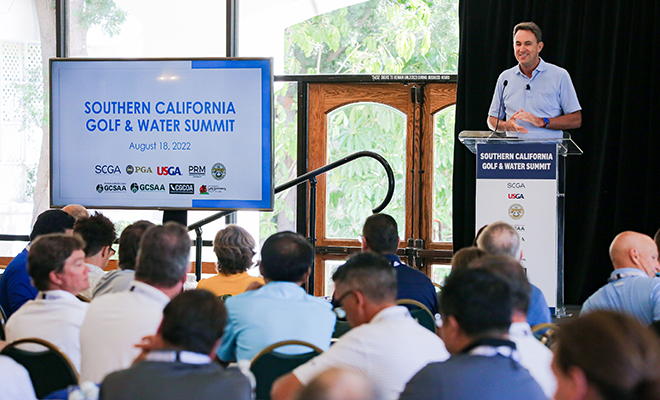Golf in the Land of Permanent Drought

As much as we would like to think that it’s the bone-dry years that are the exception, the facts say otherwise. It’s the wet winter that is the exception. So is what we used to call the “normal” winter. One credible scientific study after another is revealing that the past 130 years have been among the wettest and most stable in California history. Those same studies are revealing that droughts lasting 10 and 20 years have been common in the last millennium, and a couple of them have continued multiple generations.
In short, California has constructed an infrastructure to support 40 million souls and the sixth-largest economy in the world based upon a set of rain and snowfall expectations that we are now discovering were anything but credible assumptions upon which to build the modern California juggernaut.
That leaves the California golf industry in a precarious position. Just as the industry has been doing a remarkable job in reducing its water footprint through shrinking turf, increasing irrigation efficiency, forgoing over-seeding, replacing cool-season grasses with warm-season species, and various other water-saving practices, it has discovered that its smaller footprint is the new normal. In fact, it is expected to decrease considerably more. Reduce or face the wrath of energized regulators and water providers bent on using tiered pricing and penalty schemes to deter consumption.
It also leaves the California golf industry susceptible to the market-based narrative the environmental community uses to reduce the industry’s water footprint in the one way we find unacceptable — by reducing the California golf industry.
It’s a powerful narrative that goes something like this: Golf in the Golden State grew to be a $13 billion enterprise of 900 facilities during an era of uncommonly wet and benign weather, low population, inexpensive and plentiful land, cheap water, cheap energy, massive public investments, government subsidy of municipally owned courses, low construction costs, pre-CEQA planning costs, low labor costs, unfettered access to groundwater, simple regulatory compliance and a political ethic supportive of growth. These conditions created a market capable of bringing golf to a burgeoning middle class, cum expanding suburban base, at a price point in sync with disposable income.
But now, the weather has shifted from cool and wet to hot and dry. Population is about to hit 40 million. Water and energy are expensive. Governments have lost their appetite for subsidizing municipal golf operations. Construction costs have never been higher. After a long lull, labor costs are again on the rise. CEQA has become a nightmare for anyone venturing to build something. Groundwater is now regulated, no more stick your straw in the ground and suck up water to your heart’s content. Regulatory compliance is no longer a simple task. Add to this lethal mix the oft-cited“vanishing middle class” and what you get is a market that informs golf that modernity no longer supports a $13 billion enterprise of 900 golf courses. Accept this verdict, say the environmentalists. Recognize that you can’t bend these realities to suit your needs; your needs must bend to accommodate these realities.
Like all narratives, this environmental market narrative is riddled with arguments and judgments amenable to contradiction by equally valid arguments and judgments. But they are solid arguments supported by equally solid facts — and can thus only be successfully challenged by arguments supported by equally verifiable facts.
That is the golf industry’s challenge: not to talk past our detractors, but to talk directly to them and the arguments, facts and judgments they raise. And not just with a reactive narrative, one that merely contradicts some of the claims of the environmental market analysis, but with a powerful story about the virtues of a game that provides societal value well beyond mere commercial benefit.
Just as golf has paid a huge price for failing to acknowledge the role played by municipal governments in growing its ranks to the heights that it reached just before the Great Recession, the game will pay just as high a price if it fails to develop a counter-narrative to the environmental market narrative. In both cases there are powerful arguments in favor of a social utility that trumps a purely economic perspective, and there are arguments that can blunt much of the impact of it.
Developing the arguments will be the easy part. The hard part is going to be getting the golf community to understand the need to speak in a language very different from the language that served its interests so well during the game’s successful post-World War II, 60-year run and then do so with one voice. Speaking as one is just not something the California golf industry has yet figured out how to do.
Here’s hoping that necessity becomes the mother of both of these necessary inventions while there is more than enough time to pivot toward strategies capable of keeping the game not just thriving, but growing in the land of permanent drought.











